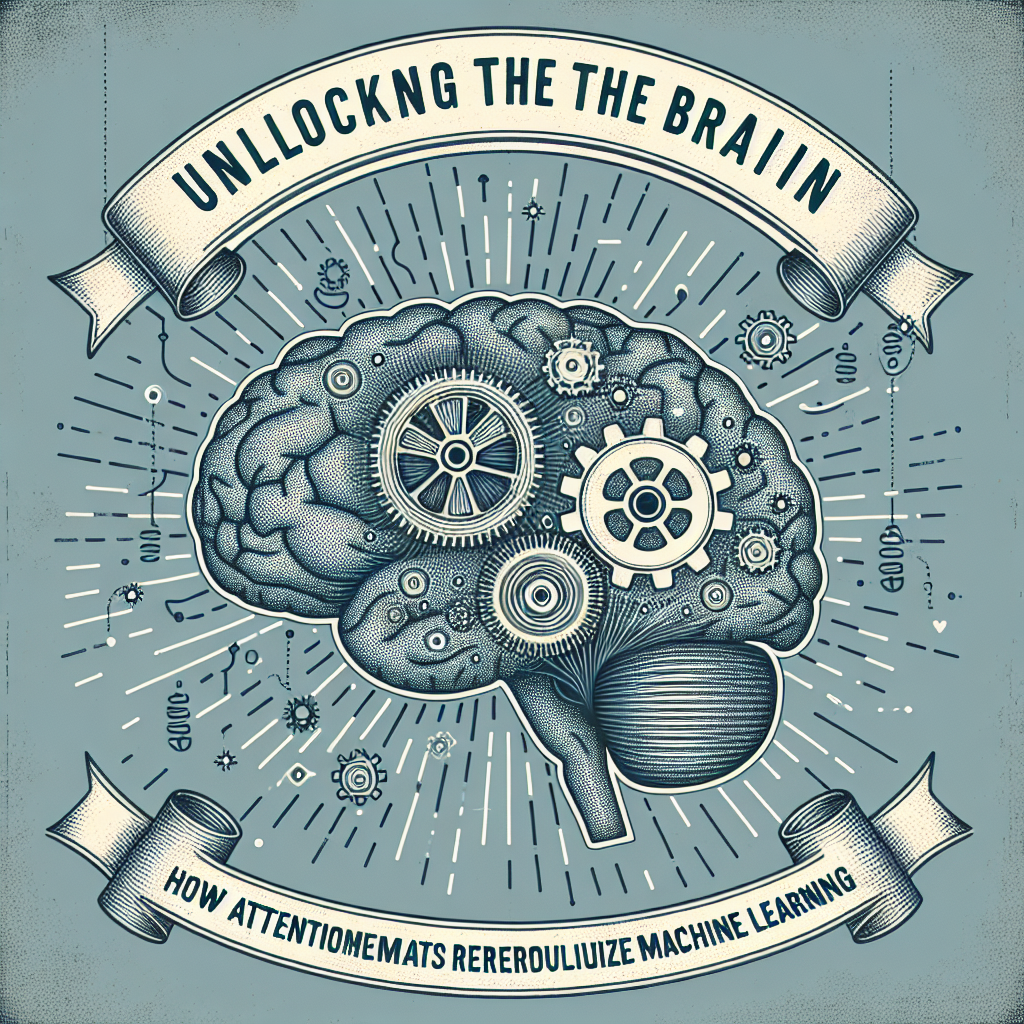
Introduction
In an era where data is akin to gold, the ability to efficiently process this data is more than just a technical advantage—it’s a game-changer. Welcome to the world of machine learning, where Unlocking the Brain: How Attention Mechanisms Revolutionize Machine Learning is not merely a catchy phrase but an essential paradigm that’s reshaping the landscape of artificial intelligence.
Understanding how attention mechanisms work in machine learning can transform various applications, from natural language processing to computer vision. By mimicking the way humans prioritize information, these mechanisms allow machines to focus on the most relevant parts of data, enhancing performance and efficiency. Buckle up as we dive into the intricate yet fascinating interplay between attention mechanisms and machine learning!
The Rise of Machine Learning
What is Machine Learning?
Machine learning (ML) is a subset of artificial intelligence (AI) that involves algorithms learning from and making predictions based on data. The concept has roots stretching back to the mid-20th century but has recently gained momentum due to increased computational power and the availability of vast datasets.
Why Now?
The digital revolution has produced a staggering amount of data—over 2.5 quintillion bytes daily! With such enormous data volumes, traditional machine learning methods struggle to remain efficient. This backdrop sets the stage for understanding the revolutionary role of attention mechanisms.
Understanding Attention Mechanisms
What Are Attention Mechanisms?
Attention mechanisms are designed to mimic the cognitive process of focusing on certain aspects of input while ignoring others. This ensures that a machine can make sense of complex data without getting overwhelmed by irrelevant information.
Types of Attention Mechanisms
- Soft Attention: Focuses on a weighted sum of all inputs, making it differentiable and suitable for neural networks.
- Hard Attention: Selectively focuses on specific parts of the input data, which can be more efficient but is harder to train.
How They Work
Attention mechanisms weigh the importance of different features in the input data, adjusting the focus dynamically. This is akin to how humans pay attention to certain stimuli in a busy environment, empowering machines to make more informed decisions.
Real-World Applications of Attention Mechanisms
Natural Language Processing (NLP)
Case Study: Google Translate
Google Translate utilizes attention mechanisms to enhance the quality of translations. By focusing on specific words that are contextually relevant, it avoids nonsensical translations that arise from treating each input word equally.
Analysis
Attention in this example ensures that the context of a phrase or sentence is maintained, allowing for translations that sound more natural and accurate, thus significantly enhancing user experience.
Computer Vision
Case Study: Image Captioning
In projects like Microsoft’s Image Captioning, attention mechanisms help machines generate descriptive captions for images by emphasizing key elements within the image.
Analysis
Utilizing attention allows the model to identify and describe salient features in complex scenes rather than attempting to summarize all aspects simultaneously, improving both the relevance and quality of generated text.
Healthcare
Case Study: Disease Diagnosis
Attention mechanisms have been applied in healthcare settings to enhance diagnostic tools. By highlighting critical parameters in medical images (e.g., X-rays), these systems can improve the accuracy of disease detection.
Analysis
This targeted focusing enables clinicians to spot abnormalities more easily, demonstrating the practical benefits of attention mechanisms in life-saving applications.
The Science Behind Attention Mechanisms
How Attention Impacts Learning
Attention mechanisms adaptively enhance learning efficiency, allowing models to prioritize critical data. By emphasizing relevant features while downplaying noise, they effectively "unlock" more profound insights from otherwise overwhelming datasets.
Mathematical Framework
Mathematically, attention can be expressed in terms of weighted averages:
[
\text{Attention}(Q, K, V) = \text{softmax}\left(\frac{QK^T}{\sqrt{d_k}}\right)V
]
Where:
- ( Q ) is the query matrix,
- ( K ) is the key matrix,
- ( V ) is the value matrix,
- ( d_k ) is the dimension of keys.
This formula efficiently captures the relationships among inputs, making it an invaluable tool in machine learning.
Advantages of Attention Mechanisms
- Contextual Understanding: They enable a model to grasp the context in which data points exist, significantly enhancing outcomes.
- Interpretability: By visualizing what a model attends to, stakeholders gain insights into the decision-making process.
- Scalability: Attention mechanisms can handle large datasets efficiently, making them suitable for various applications.
A Comparative View
| Aspect | Traditional ML | Attention-Based ML |
|---|---|---|
| Data Handling | Fixed focus | Dynamic focus |
| Context Sensitivity | Minimal | High |
| Interpretability | Low | Increased |
| Adaptability to Complexity | Limited | Adaptive |
Challenges and Limitations
While attention mechanisms are revolutionary, they come with challenges:
- Computational Overhead: Attention mechanisms often require significant computational resources, especially in large models.
- Overfitting Risks: In scenarios with limited data, attention might focus too much on noise rather than signal.
Future of Attention Mechanisms in Machine Learning
Emerging Trends
- Integrating Attention with Reinforcement Learning: This can lead to smarter agents capable of prioritizing actions based on learned environments.
- Attention in Multi-Modal Learning: Combining data from various sources, such as text, images, and audio, can further enhance the capabilities of ML models.
The Next Frontier
As we progress, Unlocking the Brain: How Attention Mechanisms Revolutionize Machine Learning will likely lead to more intuitive systems. These systems will not just analyze data but will understand context and relevance, bridging the gap between human-like and machine intelligence.
Conclusion
The exploration of attention mechanisms in machine learning offers a glimpse into the future of artificial intelligence. As we continue Unlocking the Brain: How Attention Mechanisms Revolutionize Machine Learning, we embrace a new horizon filled with possibilities. Whether it’s enhancing communication through better translations or aiding in crucial healthcare decisions, attention mechanisms are paving the way for a more interconnected and intelligent world.
FAQs
1. What are attention mechanisms in machine learning?
Attention mechanisms help models focus on relevant parts of the input data while processing, enabling improved understanding and efficiency.
2. How do attention mechanisms improve natural language processing?
They enhance the context-awareness of translations, leading to more accurate and natural language interpretations.
3. What are some limitations of attention mechanisms?
Key limitations include computational overhead and the risk of overfitting in limited datasets.
4. Are attention mechanisms only for NLP applications?
No, they are also used in computer vision, healthcare, and various other fields where data complexity is high.
5. How can I start implementing attention mechanisms in my projects?
Consider exploring frameworks like TensorFlow or PyTorch, which provide built-in functions for implementing attention layers.
In summary, attention mechanisms represent a pivotal advancement in machine learning, akin to unlocking a new level of cognitive ability in machines. The blend of improved performance, efficiency, and contextual understanding promises to reshape our interaction with technology, making this an exciting time to delve into the world of machine learning!














